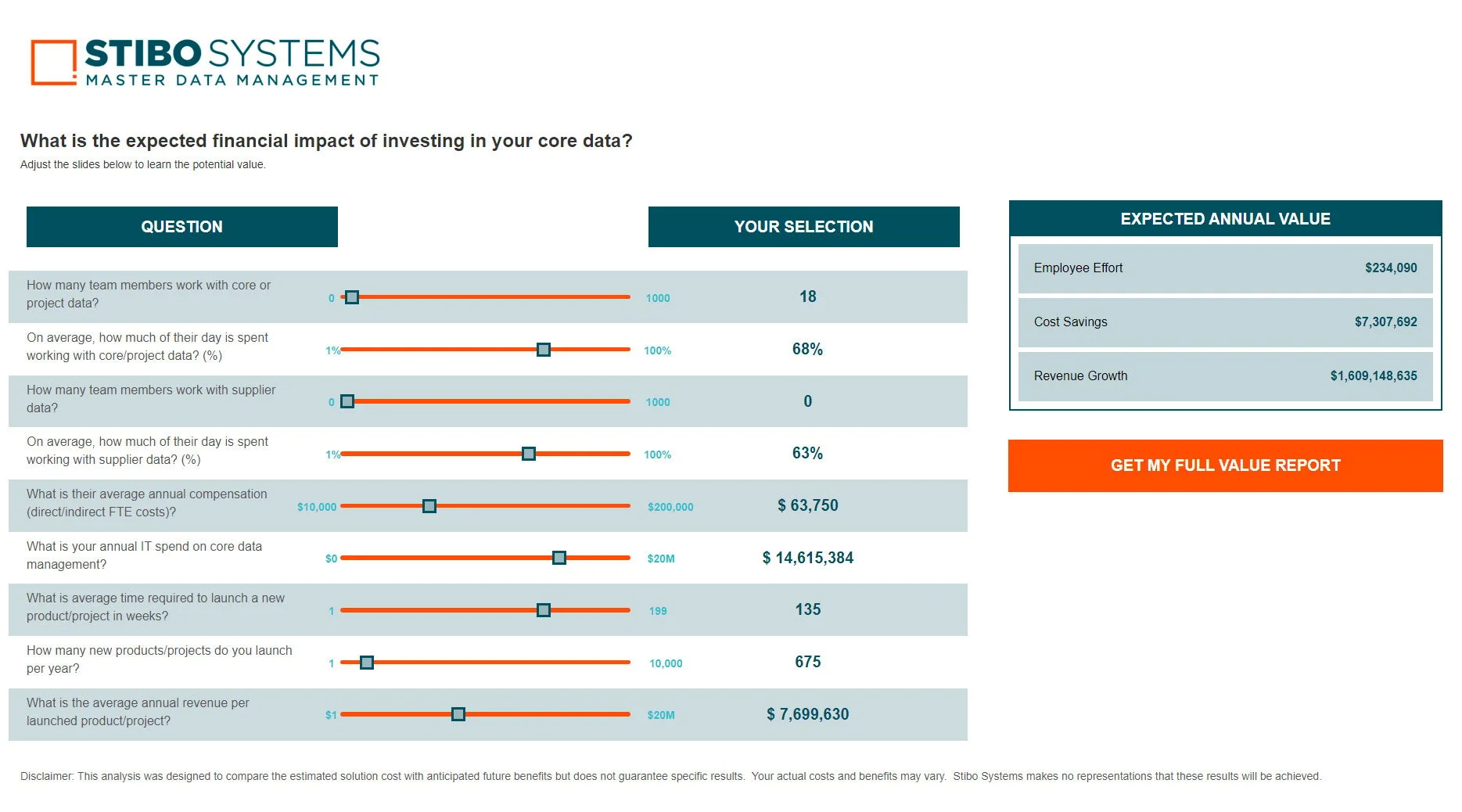Discover how augmented data management can improve the quality of your master data management processes and reduce costs
Competition in today’s digital environment is intense. Ever since UK mathematician Clive Humby coined the phrase, “Data is the new oil,” six years ago, digital transformation and big data have had profound impacts on how most companies operate. While conventional logic would say that more data (like more oil) would equate to more market power and a more valuable organization, the reality is that the path to value is not that simple.
Certainly, business data from external or internal sources, as well as other data types that are not big data, can be an asset. However, it’s important to keep in mind that the value of data is not related to the capture and storage of such data, but instead something must be done with the data to make it valuable.
Increasingly, companies are turning to augmented data management – by leveraging data automation, artificial intelligence (AI), and machine learning (ML) capabilities – to increase their competitive differentiation. Undoubtedly, there are savings to realize and revenue to capture with this approach.
 We asked Jesper Grode, Stibo Systems’ Director of Innovation, to provide insight into the benefits of augmented data management and how companies can incorporate it into their existing master data management processes.
We asked Jesper Grode, Stibo Systems’ Director of Innovation, to provide insight into the benefits of augmented data management and how companies can incorporate it into their existing master data management processes.
First, let us start with the basics. What is augmented data management?
According to University of Twente, “Augmented data management is the application of augmented intelligence to enhance data management capabilities. Augmented intelligence or intelligence augmentation is the human-centered conceptualization of artificial intelligence, emphasizing human intelligence enhancement with cognitive technology.
The goal is to leverage AI capabilities to complement human intelligence in learning and decision making, rather than replacing it. In short, augmented data management is defined as the human-centered application of artificial intelligence to enhance data management capabilities.”
In our view, the key benefit of augmented data management is that it can help you get the right data to the right place at the right time, making your business more efficient while also lowering overall costs.
How does augmented data management align with master data management, and why is it important?
Augmented master data management applies ML and AI techniques to the management of master data. This enables companies to refine master data to achieve two key objectives: to optimize their business operations to run more efficiently and transform their businesses to drive growth.
In terms of business optimization, this can be achieved in several ways using augmented master data management. First, there’s enhanced efficiency. With augmented master data management, companies can streamline business processes, which reduces the time needed to work on activities, thereby increasing efficiency and potentially leading to cost savings.
Augmented master data management can also improve the ability to comply with regulations. The number of regulations and demands on companies has been increasing; for example, we’ve seen this lately with ESG reporting and privacy laws. From a data perspective, it can be tedious and complex for companies to comply with these regulations. Establishing data automation to ensure compliance can help build B2B customer loyalty, and if done correctly, provide assurance that consumer privacy rules are being followed.
Additionally, augmented master data management can strengthen a company’s risk management practice. With data governance in place to automate error-prone manual processes, companies reduce the risk of regulatory violations and fines.
We’ve found that companies typically start their data management journeys by improving efficiencies within the business because it helps keep costs in line and improves profitability. However, this approach has fewer revenue benefits than leveraging augmented master data management to transform the business to drive growth.

Let’s talk more about the revenue benefits. How are companies leveraging augmented master data management to drive business growth?
In terms of business transformation, most companies begin their digital transformation initiatives within their own four walls and then slowly extend their digitalization efforts by leveraging data and new digital capabilities to grow their business and capture new opportunities. Augmented master data management has been proven to drive growth in various ways.
First, it can be used to enable visibility into the supplier ecosystem and channels to support smart procurement and alignment to ESG commitments. Secondly, it can be leveraged to support the delivery of exceptional customer experiences. By taking advantage of data automation and augmented master data management, companies can use authoritative data to drive personalized, consistent experiences to build consumer trust and long-term loyalty.
Finally, augmented master data management can increase business agility and accelerate digital transformation initiatives, which can ultimately lead to sales growth. Companies that can pivot quickly to expand their business scope using digital capabilities are poised for success. Potential revenue opportunities include using data to partner with other companies, creating additional data-driven features on existing products or even harnessing data to create new products to reach digital customers.
From a process perspective, what are some use cases for augmented master data management?
There are several use cases relating to processes. All organizations need to onboard data; this data can come in regular formats while other data provided by suppliers may be incomplete or unformatted. Augmented master data management can assist in the tedious formatting process that is required before data can be onboarded.
Furthermore, data needs to be categorized, and AI-fueled data automation can help properly categorize items in the right segment and ensure the right placement up and down the hierarchy. Lastly, item mapping, which can potentially be a taxing process for data stewards and analysts, can be partially or fully automated to ensure consistent mapping to other data sets within the organization.
Some use cases include unsupervised industry standards classifiers, supervised automated classification, automated mapping, and data imputation.
How might companies use augmented master data management to improve their data quality?
For large organizations, it can be incredibly difficult to maintain the consistency of content across all their products. Augmented master data management can help organizations automate the content enrichment process and ensure that data on products, customers, suppliers, or other business data reaches quality standards based on the company’s business rules.
Some use cases include the consistent generation of product abbreviations through natural language processing, anomaly and outlier detection, and natural language generation from raw data.
What are the potential downsides for companies that don’t have a plan for their data or aren’t using data automation methods yet?
There are several. Without a data strategy, data flows inconsistently to individuals and across an organization’s functional areas, creating pockets of data, which are often referred to as data silos. Some of that data is never used, some are used on an ad hoc basis and a small portion is absorbed into a BI framework to aid in event reporting. While some of the data may be governed, it is highly likely that all data sources are not governed. In fact, many key team members may not even be aware of all the data that is available. Unfortunately, this approach to data is common across various industries.
An enterprise data strategy solves this by informing data professionals how each type of data is managed, governed, and used in analytics. Without this focus and alignment, data scientists and analysts may spend too much time finding data, verifying data, and making it fit for use – wasting precious analytic talent. Identifying the right data management augmentation use cases can remove the tedious data management burden from data professionals, freeing them up to do more valuable work.
There’s also the cost of falling behind.
Consumers and businesses have become more digital; you see it in how they interact, shop, discover new products, socialize, and even enjoy their leisure time. Each of those activities generates a river of data, which could potentially be used by companies to create new, more precise ways of understanding the market, their customers, and their customers’ digital activities. These new insights can help companies make more informed predictions on future behaviors and improve customer segmentation efforts.
Companies that rely on their data talent to do the heavy lifting may run the risk of being resource constrained, whereas those keeping pace with the market have begun to create and execute a hybrid data strategy of AI and human intelligence. In fact, companies considered digital frontrunners have 3x more profitability than their peers according to Accenture. Unfortunately, companies that lack digital capabilities and analytic maturity relative to their peers are likely to encounter additional hurdles for future success.
How can companies incorporate augmented master data management into their existing data management processes?
Companies can embed augmented master data management seamlessly into their current data management activities, automating processes that enable them to accelerate their business tempo. As part of their data management journey, they’ll be able to test ways to automate their master data management processes and improve data quality, resulting in better data and more cost savings.
AI & ML – So What's All the Hype About?

Decades of experience within master data management, technologies, people and processes has led Jesper Grode into his current role, heading Stibo Systems' innovation efforts. He has a particular focus on multidomain MDM, augmented MDM and technology adoption. Being responsible for company-wide strategic initiatives on product innovations, he is constantly seeking to increase the value of product offerings to customers and partners. Jesper comes from prior roles as Product Strategy Director, Section Head R&D, Director Professional Services, and Associate Professor at a Danish university.






